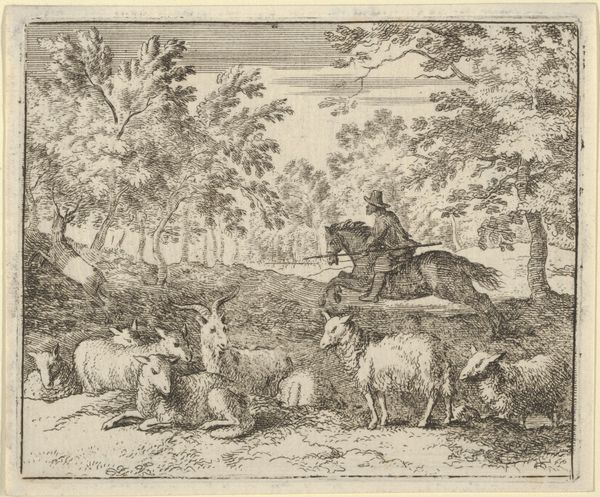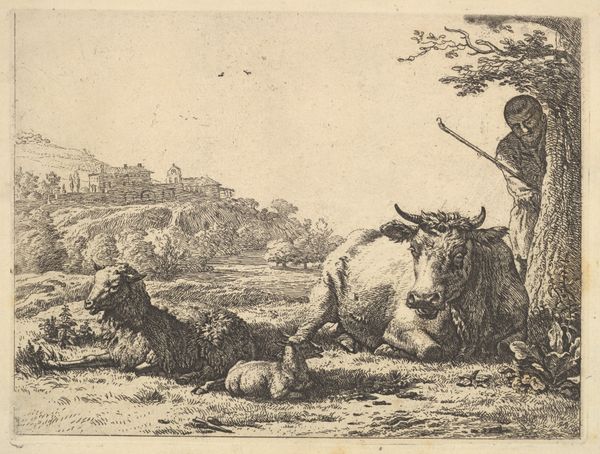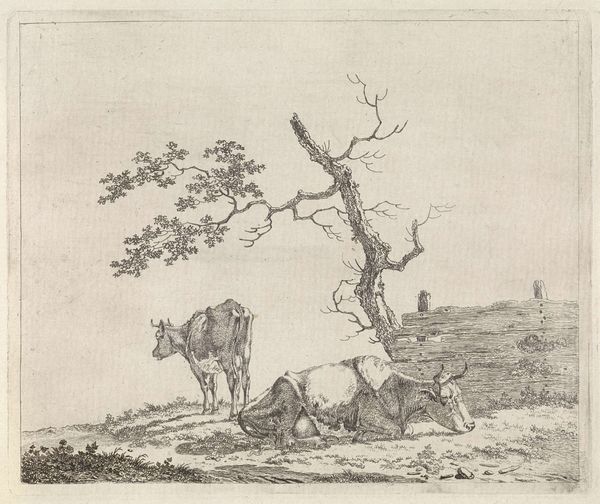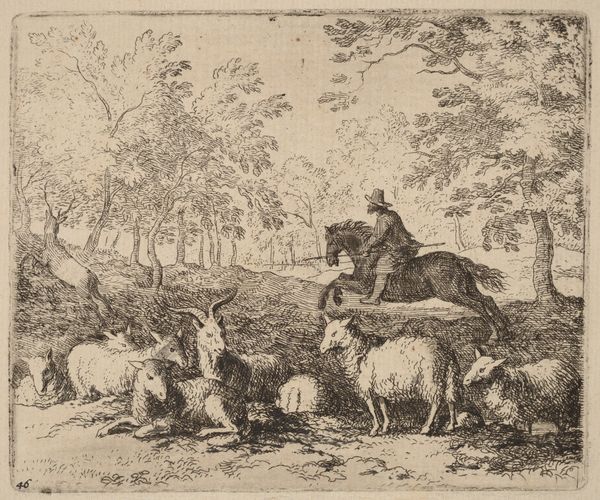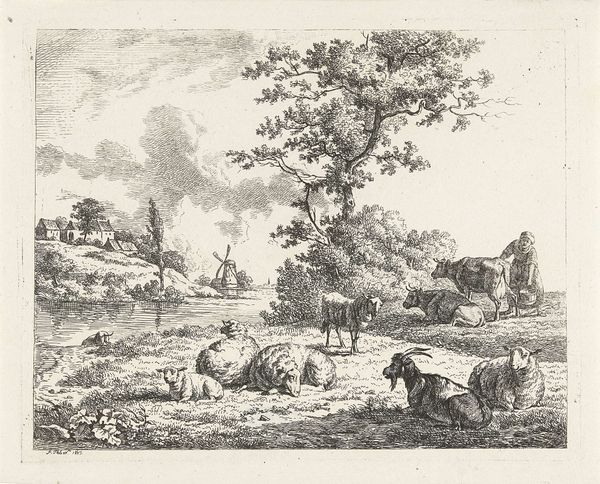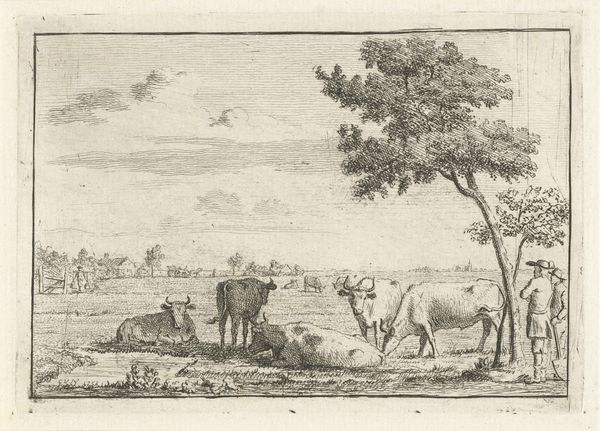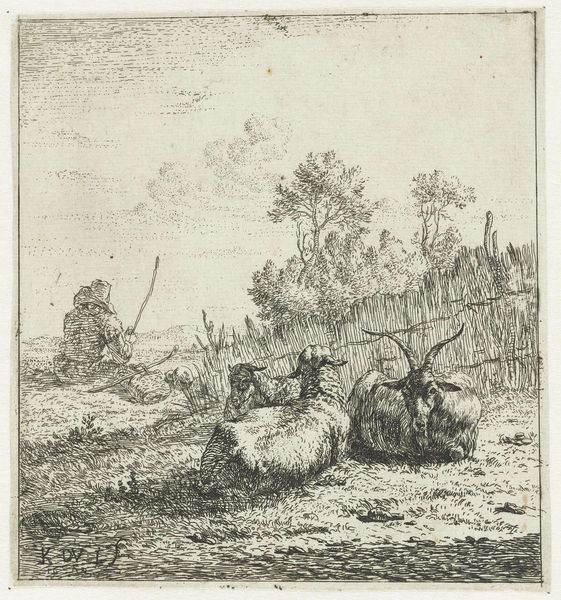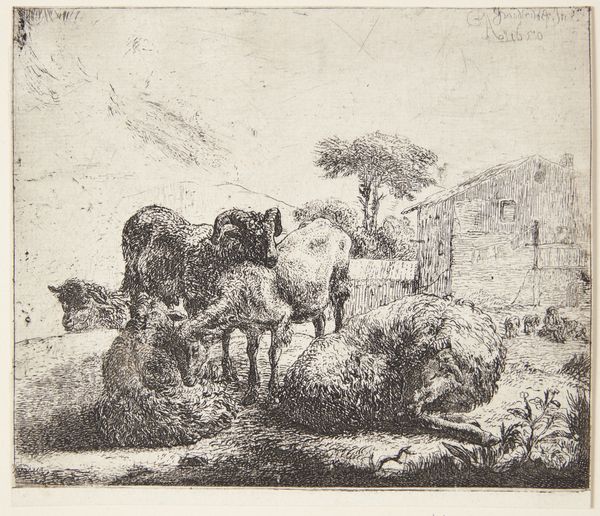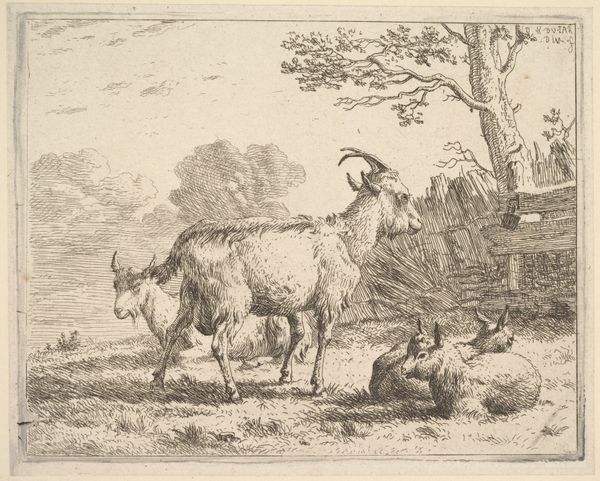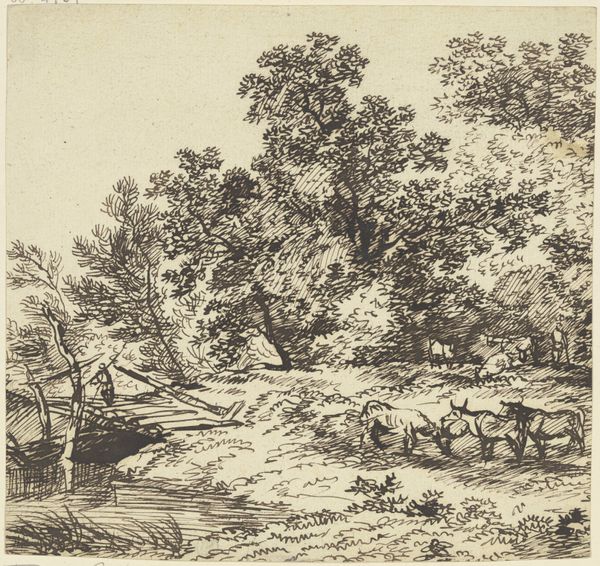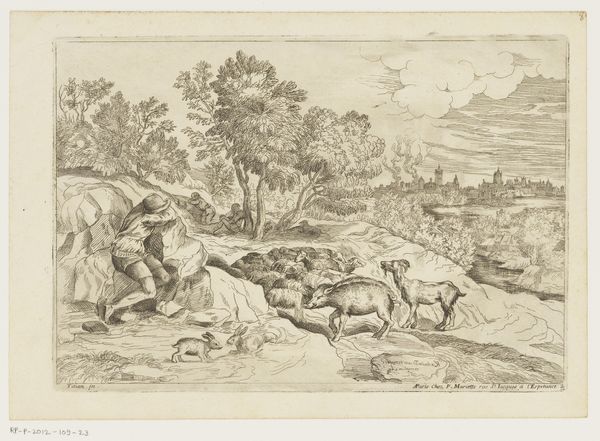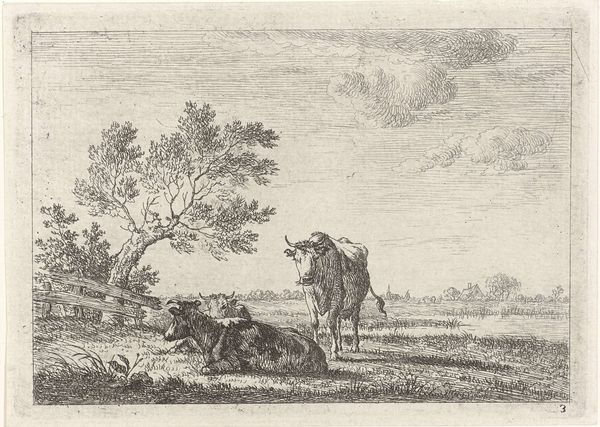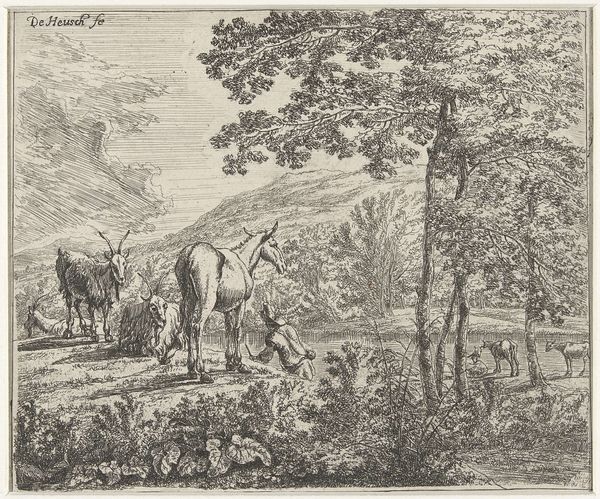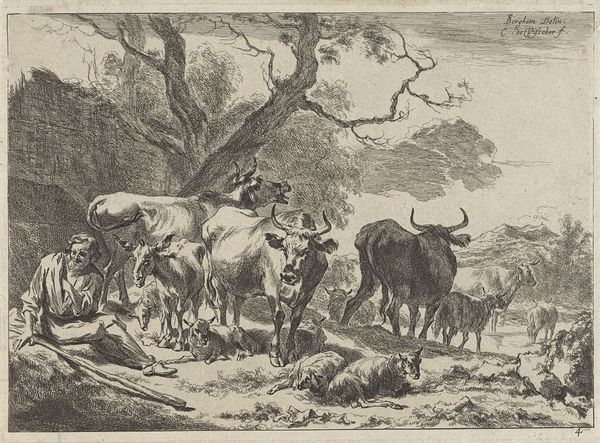
drawing, print, paper
#
drawing
#
dutch-golden-age
# print
#
landscape
#
paper
#
genre-painting
Dimensions: 181 × 268 mm
Copyright: Public Domain
Paulus Potter created "The Shepherd," an etching, sometime in the mid-17th century. The etching process is all about controlled corrosion. The artist covers a metal plate with a waxy, acid-resistant ground. Using a needle, the artist scratches away the ground, exposing the metal. Then the plate is submerged in acid, which bites into the exposed lines, creating grooves. Ink is applied to the plate, filling these grooves, and the surface is wiped clean. Finally, the plate is pressed onto paper, transferring the ink and creating the print. In "The Shepherd," Potter's skillful lines bring the scene to life, from the textures of the sheep's wool to the distant landscape. Printmaking allowed for wider distribution of images, playing a crucial role in shaping visual culture and influencing artistic styles. The amount of labor involved, from preparing the plate to printing each impression, highlights the value of skilled craftsmanship. Appreciating the materials, making, and historical context allows us to understand the full meaning of the artwork, and challenges the divide between fine art and craft.
Comments
No comments
Be the first to comment and join the conversation on the ultimate creative platform.
